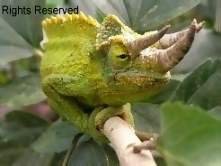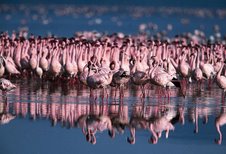Facts
you should know about the Giraffe
Giraffe is one of
the most amazing animals especially because of the long neck that makes it
sometimes cumbersome and prone to a couple of problems. We will see them as we
proceed and you will be able to understand more.
African ruminant
mammal, Giraffa camelopardalis, live in open savannahs south of the Sahara and has only one family member, the Okapi. The giraffe is the
tallest living mammal. Head/shoulder length is approximately 13' for the
male. Shoulder height is 8-12', overall height 15-19'. Weight is
1,100-2,800 lbs.
The reticulated giraffes are handsomely patterned in golden browns, with a
coarsely netted (reticulated) pattern mainly quadrangular in shape. Males
and females have stiff manes along their necks. Both sexes have horn-like
structures called ossicones on top of their heads between their ears. These
ossicones are present at birth in the form of small knobs of cartilage covered
with skin and hair which becomes bony nodules with age.
They
have seven vertebrae in neck, the same as man and most other mammals despite
the long neck. Only that the vertebrae are much bigger. The tail measures
up to one yard with a terminal tuft of stiff, black hair.
They
have long tongues that measure 18-21 inches long. The inner part of the tongue is
pink in color, and then changes to a purplish-black color for the last 6 inches that are commonly
visible.
A
quick look at the adaptations of the Giraffe
They
have long legs and neck, long, tough, prehensile tongue, and leathery mouth for
food gathering. Their coloration is protective. They are tall with good
eyesight for watchfulness. Giraffes have high blood pressure (240/160) for
pumping blood to the brain. Herds are small and loosely constructed of 5-15
individuals, consisting of one bull with females and young. Other bulls
are solitary or in pairs.
They usually sleep standing up. Going for a month without water
is also possible as an adaptation to long drought periods in their native
areas. A browsing ruminant that
eats regularly throughout the day, the giraffe prefers young leaves and shoots
at tops of acacia trees which sometimes ends up shaping the regularly visited
trees. They prefer to drink regularly, but can go without water for
several days. Giraffes can run up to 35 mph. Predators are
leopards (prey on young), lions, and man. Giraffes kick with their hooves
and slam with their heads. A giraffe usually sleeps for only 1-12
minutes.
Off
springs
Giraffes
are non-seasonal breeders, usually producing one calf after a gestation period
of 14-15 months. Newborn
giraffe calves begin their lives by falling up to about 6 feet to the ground, and weight 87-107 lbs. They become sexually mature
between 3 and 4 years of age and have a life span of about 25 years and up to 30 in captivity. Full body
size is not reached until five years of age.
It is
interesting to note that...
The
carotid artery that carries blood from the heart to the head is thick, muscular
and elastic, ballooning when the giraffe stoops to absorb increase in
pressure. When the giraffe raises its head, a series of check valves in
the inch-wide jugular vein prevents a sudden back flow from the head, emptying
the brain. They are most vulnerable to predators when drinking or lying
down. They may see red-orange, yellow-green, purple, green and blue as
colors. Their scientific name means "camel-leopard-like one who
walks swiftly." Their spot patterns are as individual as
fingerprints. They
are among the very few mammals that cannot swim at all.
Giraffe’s have a variety of sounds but they are rarely heard. They
may grunt of snort when alarmed, females may whistle
to call their young, and calves can bleat.
PKP. Safaris in Kenya desk
Natural Track Safaris








